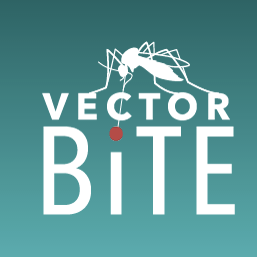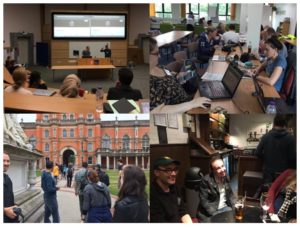
Vectors encompass a large range of organisms that are important in many diverse disease systems. From mosquitoes to aphids, the behaviours of each vector species have important consequences for vector-borne disease dynamics. Improving understanding of these vector behaviours will greatly improve dynamical predictions of these systems and is the motivation for many scientists that are involved in the VectorBiTE Research Coordination Network.

Research Coordination Networks (RCNs) are established to advance research by developing new collaborations and supporting groups of scientists sharing new ideas to advance the field. The VectorBiTE RCN is a transatlantic endeavour and is funded in the UK by BBSRC and in the US by NIH. Following last year’s successful meeting in Clearwater, FL, this year the meeting was hosted at Imperial College Silwood by the UK PI Lauren Cator and the VectorBiTE Board.
The meeting started off with working group updates. Both from groups that were established in last year’s meetings and new groups. These covered a range of topics investigating the influence of vector traits on disease transmission outcomes:
- Open-access vector science: Data acquisition and use
- Environmental Influences Across Stages
- Assessing the power of rate summation to predict performance in a thermally fluctuating environment
- Species interactions in transmission (SpIT)
- What traits determine host range in bird malaria?
- Toward a better understanding of EIP
- Vector behaviour and co-infection dynamics in spatially structured populations
- Ecoinformatics (see VectorByte below)
Over the two and a half days, working groups focused on their topics – making significant progress on models, meta-analyses and conceptualization. It wasn’t all work and no play- participants enjoyed hikes, pubs and food over discussions of vector-y things. If you are particularly interested in getting involved in any of these groups, please feel free to join the groups online – it is a very friendly group of people that are always looking for new collaborations. The event closed last Thursday with a live streamed progress update and discussion of future activities. It provided a great closing to such a productive meeting and was open to encourage others not able to attend to participate.
One of the key outcomes of this RCN is the development of a trait database, aptly named VectorByte. Samraat Pawar and a team of Ecoinformaticians have been working on best practices for data collection and management for vector trait data. The goal is to provide a platform for collecting data from diverse systems but make the entry process as simple as possible to encourage more people to input their own data. Ideally, the system will be set up to encourage Citizen Science input. Anyone can sign up for access to the database and you can begin to explore the data available through tutorials. It’s a highly interactive community, so go and check it out!
Looking ahead, there is a lot of exciting work coming out of this coordination network that will undoubtedly advance our understanding of the complexities of vector-borne diseases. Next year there will be a focus on training at the annual gathering. If you are a student or early career researcher, make sure to check the website around January 2018 for information on the 2018 meeting at Stanford University.

Comments